I used this NES-style mechanical keyboard for a week — and it’s great for $99
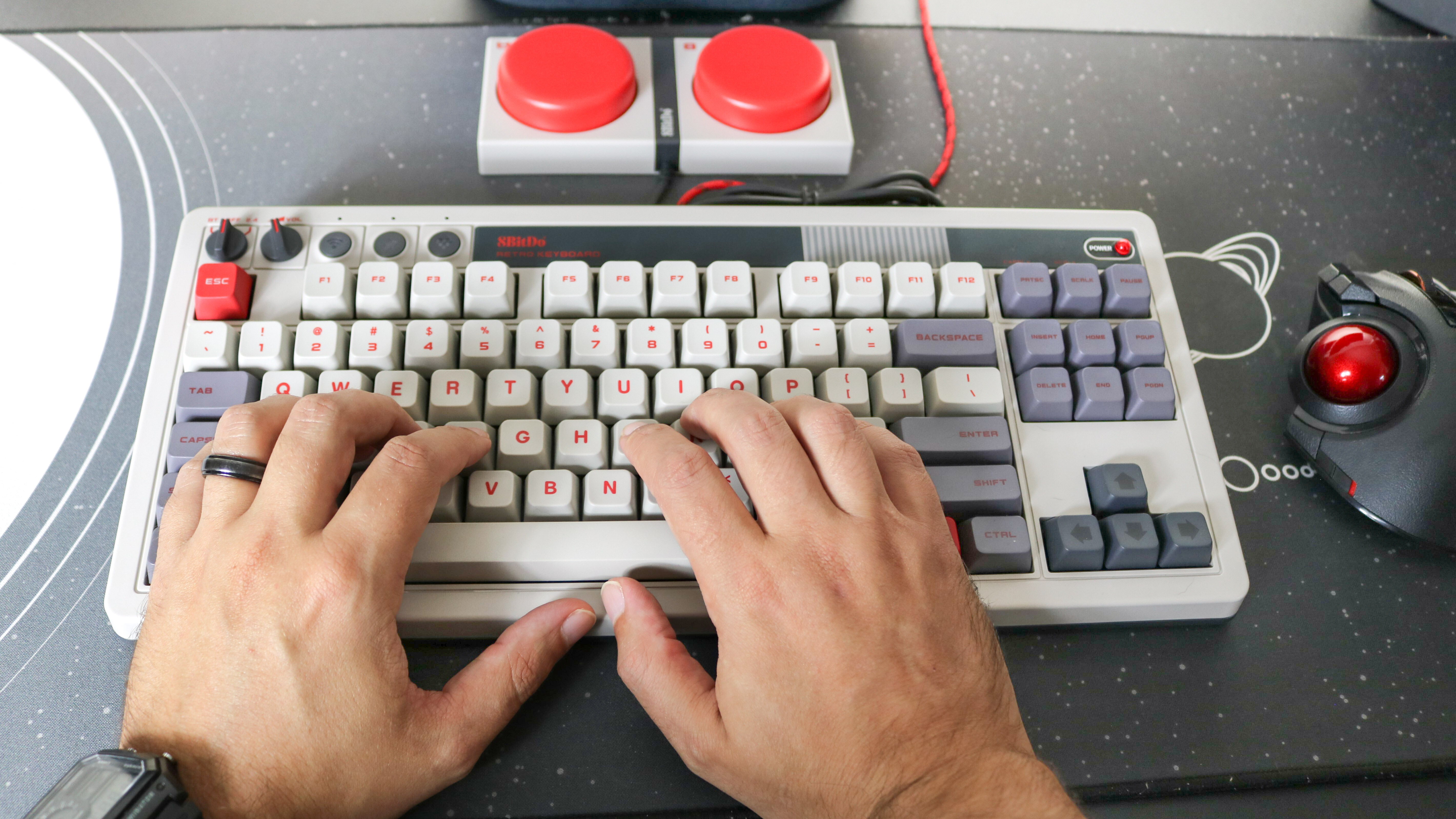
Unlike the other gadgets in my office, my keyboards are just as great to look at as they are to use. In fact, the right keyboard can make or break a desk setup.
Since I’m constantly typing throughout my workday, I frequently switch between several of the best mechanical keyboards. Sure, I might pick out a particular keyboard for the way it complements my current desk mat or even one of the best standing desks. However, due to the fact that different keyboards use different types of mechanical switches, I may choose a quieter one for working at night or a louder one while working during the day when no one else is home.
Every once in a while though, a new keyboard comes along that I just have to try and see in person. This was certainly the case with 8BitDo’s new Retro Mechanical Keyboard ($99, Amazon). Besides sporting a NES or Famicom inspired design, the Hong Kong based company’s new keyboard also takes a lot of design cues from its past controllers and even its arcade sticks.
8BitDo sent over the N Edition of its Retro Mechanical Keyboard for review and I’ve spent the past week using it as my daily driver. Here’s what sets the company’s first mechanical keyboard ever apart from some of the best keyboards out there and why you might want to pick one up for yourself.
Not your average mechanical keyboard
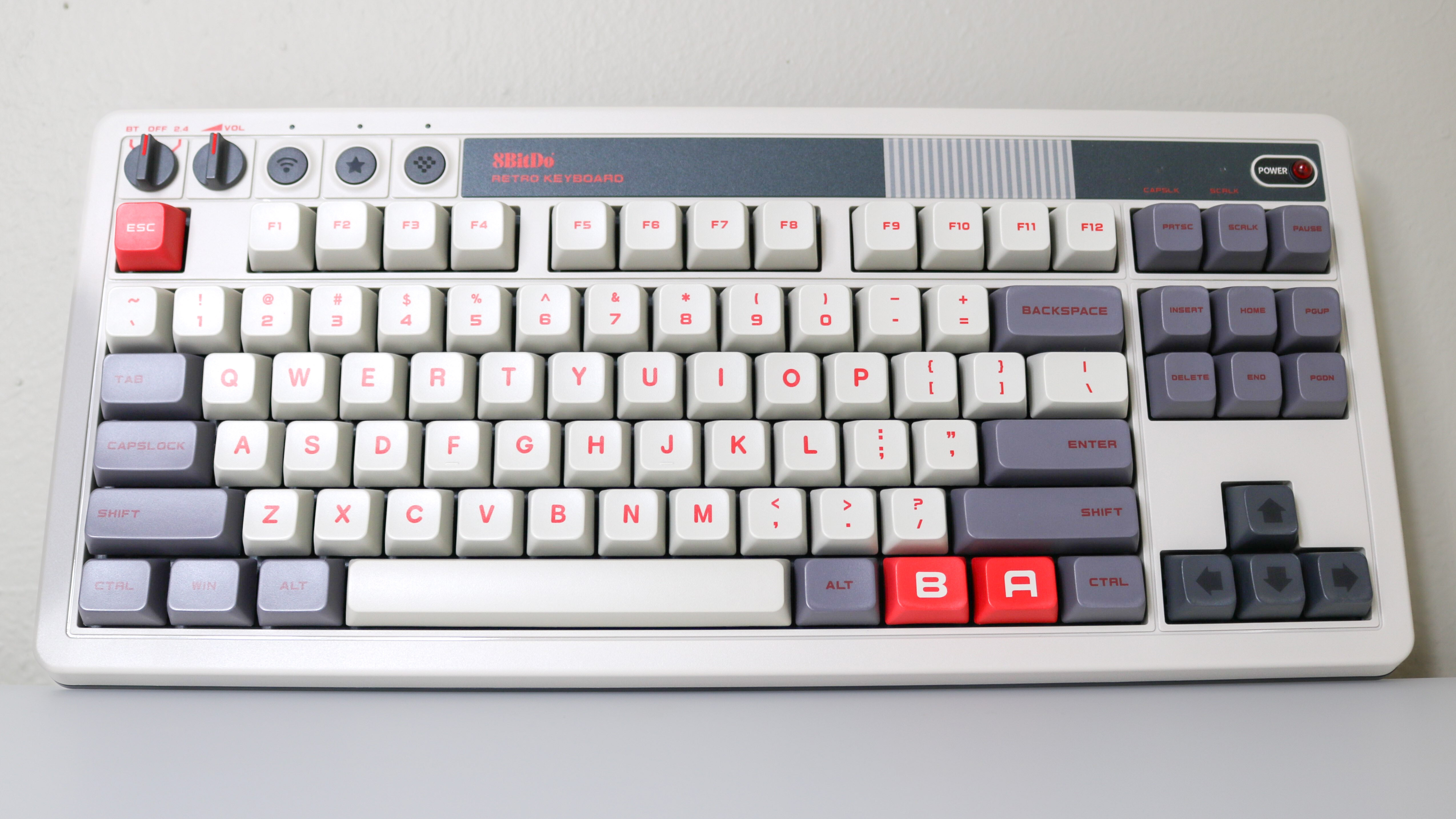
With its new keyboard, 8BitDo took a page out of its own playbook and used similar color schemes to Nintendo’s NES and Famicom game systems just like it did with its NES30 Pro and FC30 Pro controllers back in 2017. The 8BitDo Retro Mechanical Keyboard looks great in either version, though the Fami Edition of the keyboard adds Japanese characters along with English lettering to its keycaps. The dye-sub PBT keycaps really look like they belong in a Nintendo game as do the programmable A and B keys on the bottom row.
Besides its NES-style design, what immediately struck out to me is that the 8BitDo Retro Mechanical Keyboard features the same knobs and buttons you’ll find at the top of the 8BitDo Arcade Stick for Xbox or the one for the Nintendo Switch. The knob on the left lets you switch between connection modes (Bluetooth, wired or 2.4 GHz) while the one on the right lets you adjust your computer’s volume. Next to these, there’s a pairing button, a button for quickly remapping those programmable A and B keys and a button to switch between profiles. Finally, you have the 8BitDo logo and the device’s name on a panel that looks like the strip across the top of the NES and there’s even a retro-looking status LED on the far right side.
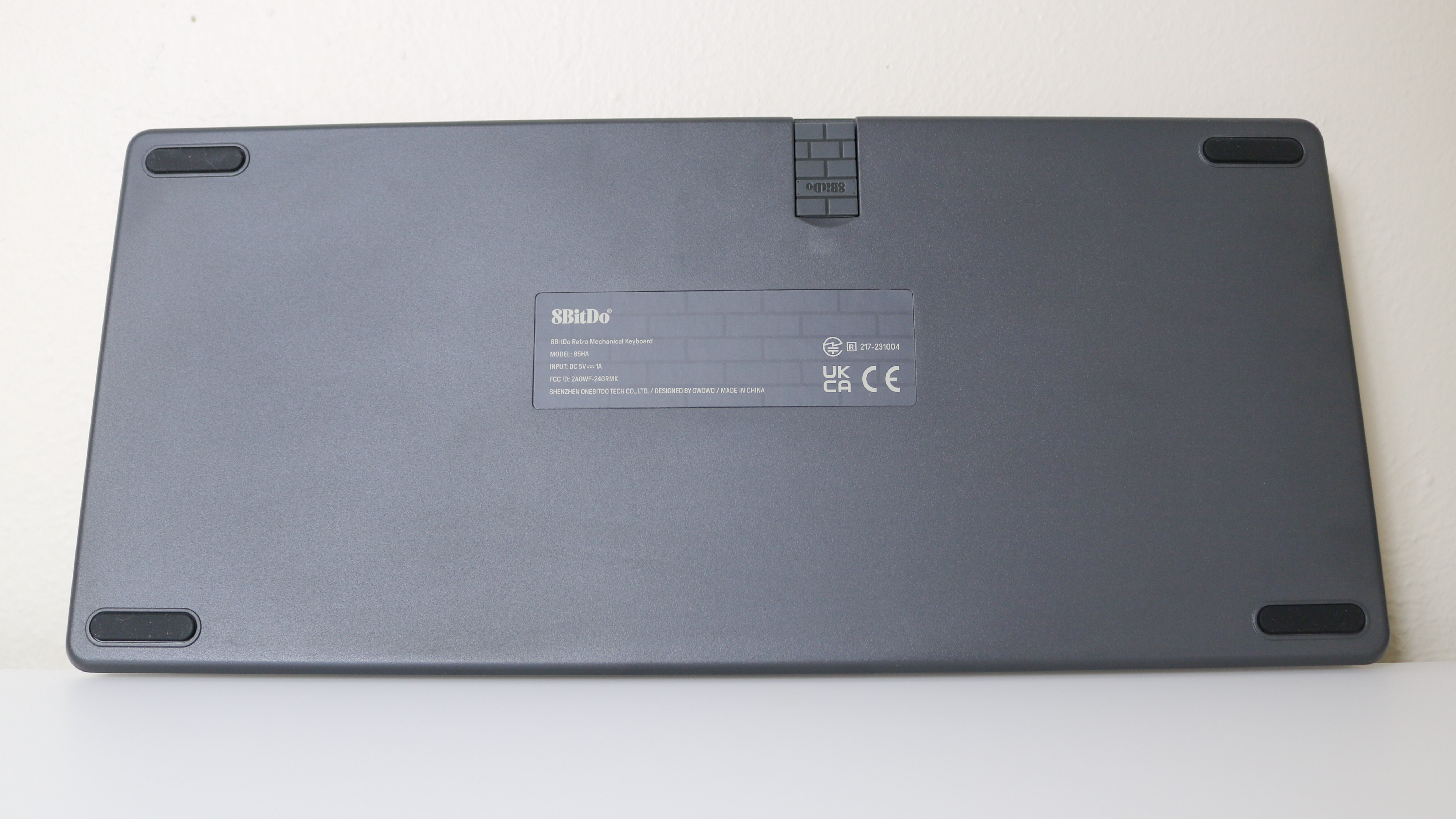
When you flip the 8BitDo Retro Mechanical Keyboard over, there are four rubber feet and all of the regulatory information inside a small box filled with the kinds of bricks you’d see in a Mario game. It’s these small details that really make this keyboard stand out. If you’re familiar with 8BitDo, then you’ll immediately recognize the design of the adapter at the top of the keyboard that looks just like its other wireless USB adapters, which are great for doing things like using the best PC game controllers on the Nintendo Switch. This adapter attaches magnetically to the keyboard and allows you to connect it to your computer wirelessly over a 2.4 GHz connection instead of Bluetooth.
Get instant access to breaking news, the hottest reviews, great deals and helpful tips.
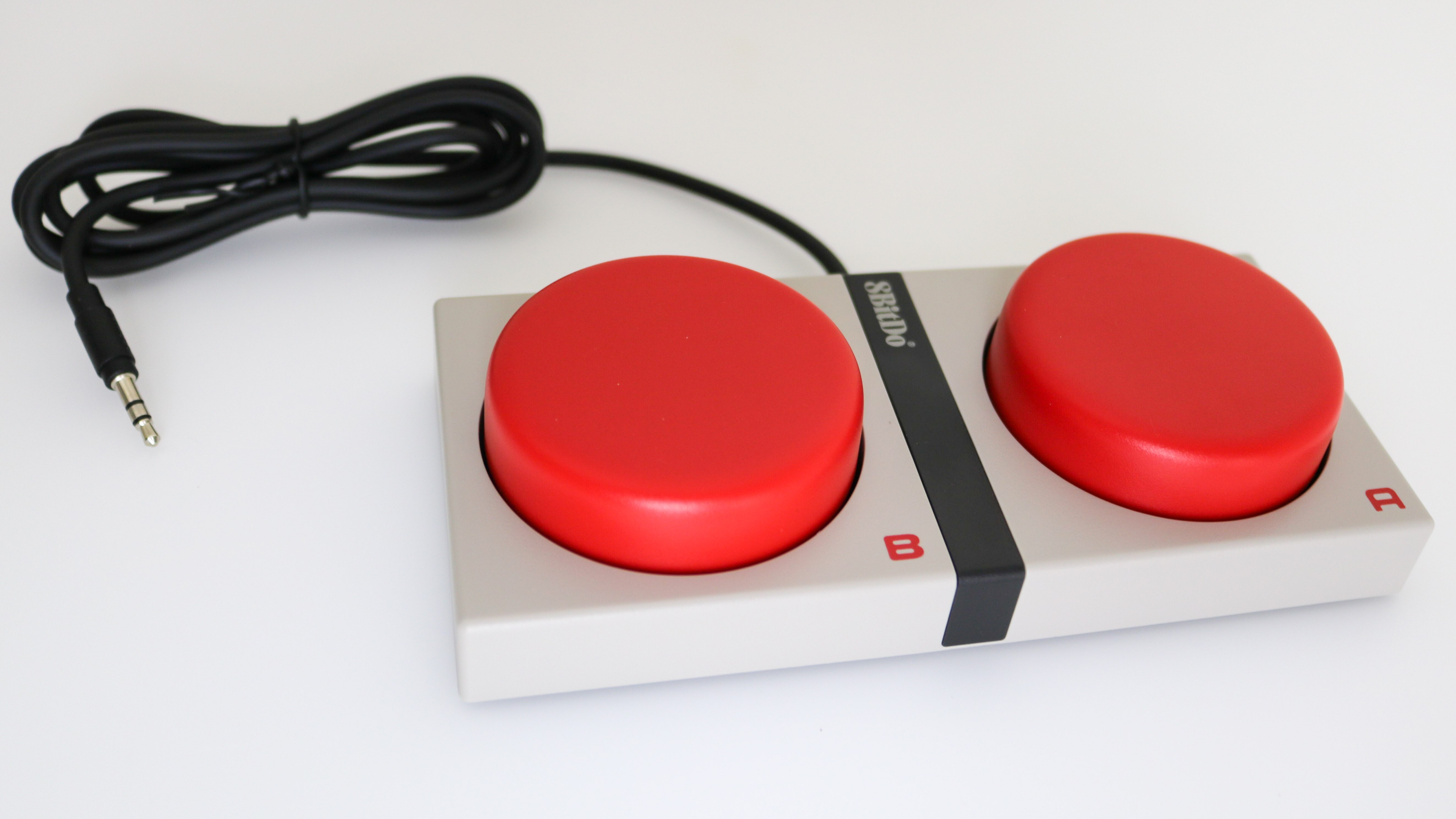
There’s one other item that comes in the box with the 8BitDo Retro Mechanical Keyboard that no other keyboard has: a pair of Dual Super Buttons. Just like with Microsoft’s Xbox Adaptive Controller, they use a 3.5mm audio jack to connect to the back of the keyboard. In fact, there are actually four of these ports at the back of the keyboard which means you could have up to eight, large programmable buttons to complement your workflow. The keyboard comes with one set but you can order additional Dual Super Buttons ($20, 8BitDo) on the company’s website.
8BitDo’s Dual Super Buttons can be programmed on the fly by pressing the Star key at the top of the keyboard and then holding one of your favorite keyboard shortcuts and then pressing either button. However, you can also use the company’s Ultimate Software to do so as well and this might be the better route if you want to program complicated macros to these buttons.
A keyboard that sounds as retro as it looks
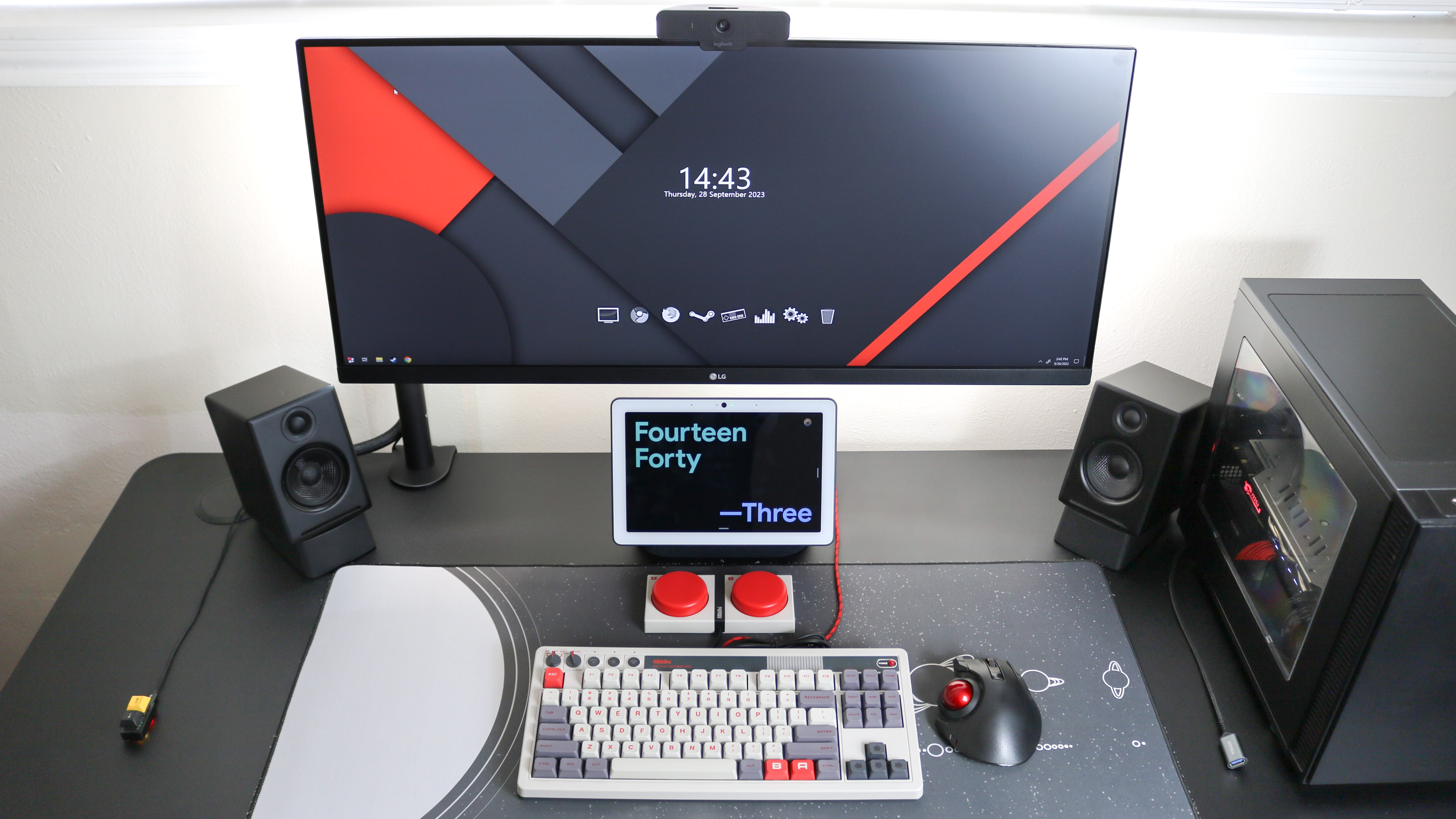
So what’s it like using the 8BitDo Retro Mechanical keyboard? It’s super clicky since the keyboard is outfitted with Kalih Box White Switches V2. Unlike with Cherry MX browns or reds which are silent, these mechanical keyboard switches give off a loud click when pressed. This complements the retro look of the keyboard but means it’s better suited for working from home than in an office setting. Fortunately, you can easily swap out these switches with quieter ones since the 8BitDo Retro Mechanical Keyboard also features a hot-swappable PCB but more on that later.
I’ve been using the 8BitDo Retro Mechanical keyboard every day this week and after using Cherry MX clears and browns for the past few years, I had forgotten just how satisfying it can be to type with clicker mechanical switches. As for the Dual Super Buttons, I programmed the one on the left to show all of my Windows desktops (Win + Tab) and the one on the left to open a new File Explorer window (Win + E). Meanwhile, I’ve configured the A and B buttons on the bottom row of the keyboard to quickly switch between my Windows desktops (Ctrl + Win + the left or right arrow keys).
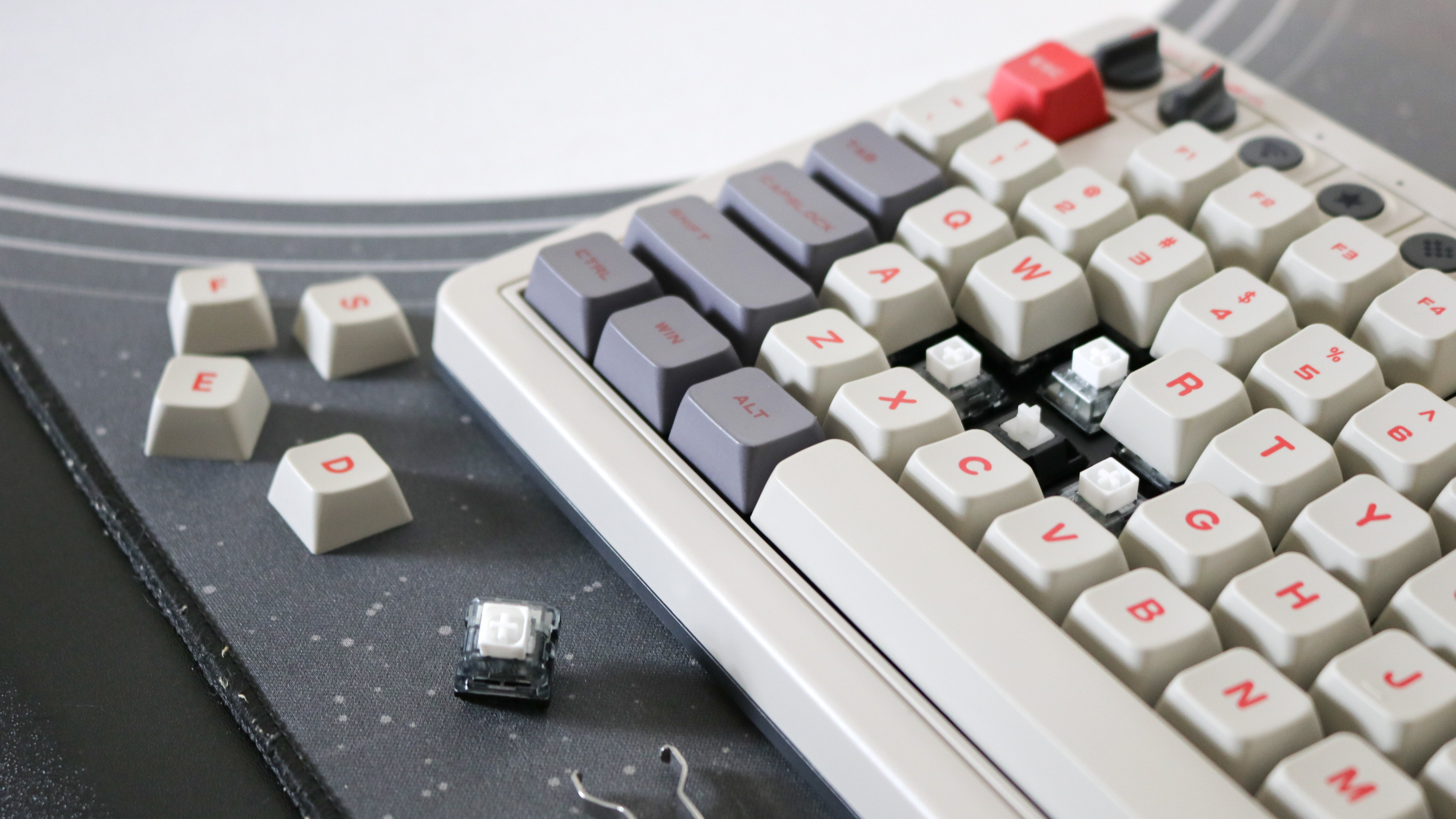
In addition to all of these extra features, I love the fact that 8BitDo included a hot-swappable PCB with its keyboard. I still need to order some extra mechanical switches to swap them all out, but in the picture above, you can see how I took off the keycaps and swapped one of the Kailh Box White Switches V2 with an extra Cherry MX clear switch I had laying around. If the clicky nature of the 8BitDo Retro Mechanical Keyboard doesn’t suit your typing style or is too loud for where you plan on using it, you can easily buy another set of keyboard switches and swap them out. This is also a great chance to give your mechanical keyboard a good cleaning. If you don’t swap out the stock switches, this is still a great option to have, especially since you won’t need a soldering iron to replace them.
First controllers, now computer peripherals
Whether it's with the best Nintendo Switch controllers or with accessories for your computer, like with its first mechanical keyboard, 8BitDo continues to innovate and deliver products that immediately give you that nostalgic feeling. Its new Retro Mechanical Keyboard has really impressed me so far, but I still need to put it through the paces for my final review. Still though, at $99, it not only looks great but is a joy to type on.
If you’re thinking of picking up one of your own, 8BitDo also makes a NES-style mouse ($30, Amazon) that pairs perfectly with its new keyboard for those looking to put together a complete retro setup for their computer. You often have to spend double or even more than what the 8BitDo Retro Mechanical Keyboard costs to have a keyboard that stands out like this one. Plus, even high-end mechanical keyboards don’t come with 8BitDo’s Super Buttons which essentially act as a large macro pad and can certainly help you be more productive throughout your day.
More from Tom's Guide
- This is the one feature I absolutely need when using a smaller keyboard
- 5 cable management tricks I use to keep wires tidy in my house
- I bought this $20 accessory to organize my gadgets and it’s a game changer

Anthony Spadafora is the managing editor for security and home office furniture at Tom’s Guide where he covers everything from data breaches to password managers and the best way to cover your whole home or business with Wi-Fi. He also reviews standing desks, office chairs and other home office accessories with a penchant for building desk setups. Before joining the team, Anthony wrote for ITProPortal while living in Korea and later for TechRadar Pro after moving back to the US. Based in Houston, Texas, when he’s not writing Anthony can be found tinkering with PCs and game consoles, managing cables and upgrading his smart home.
